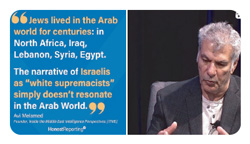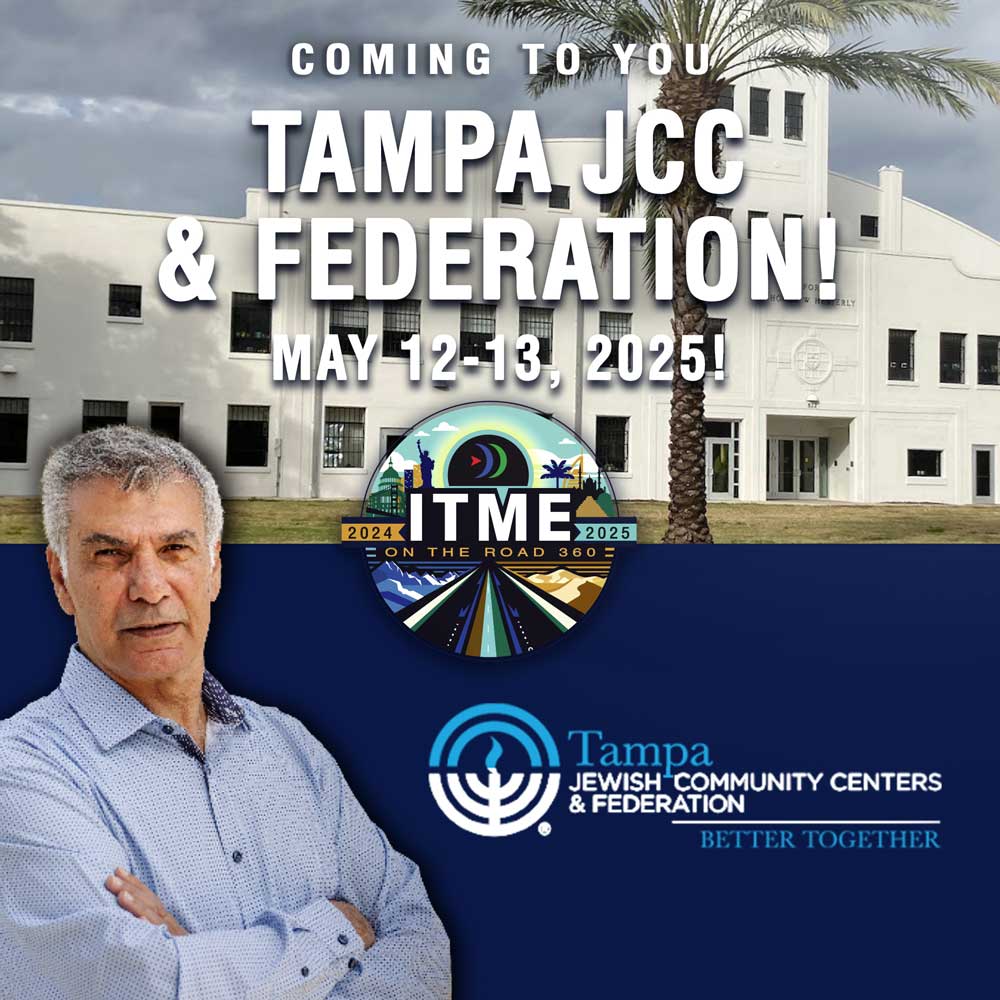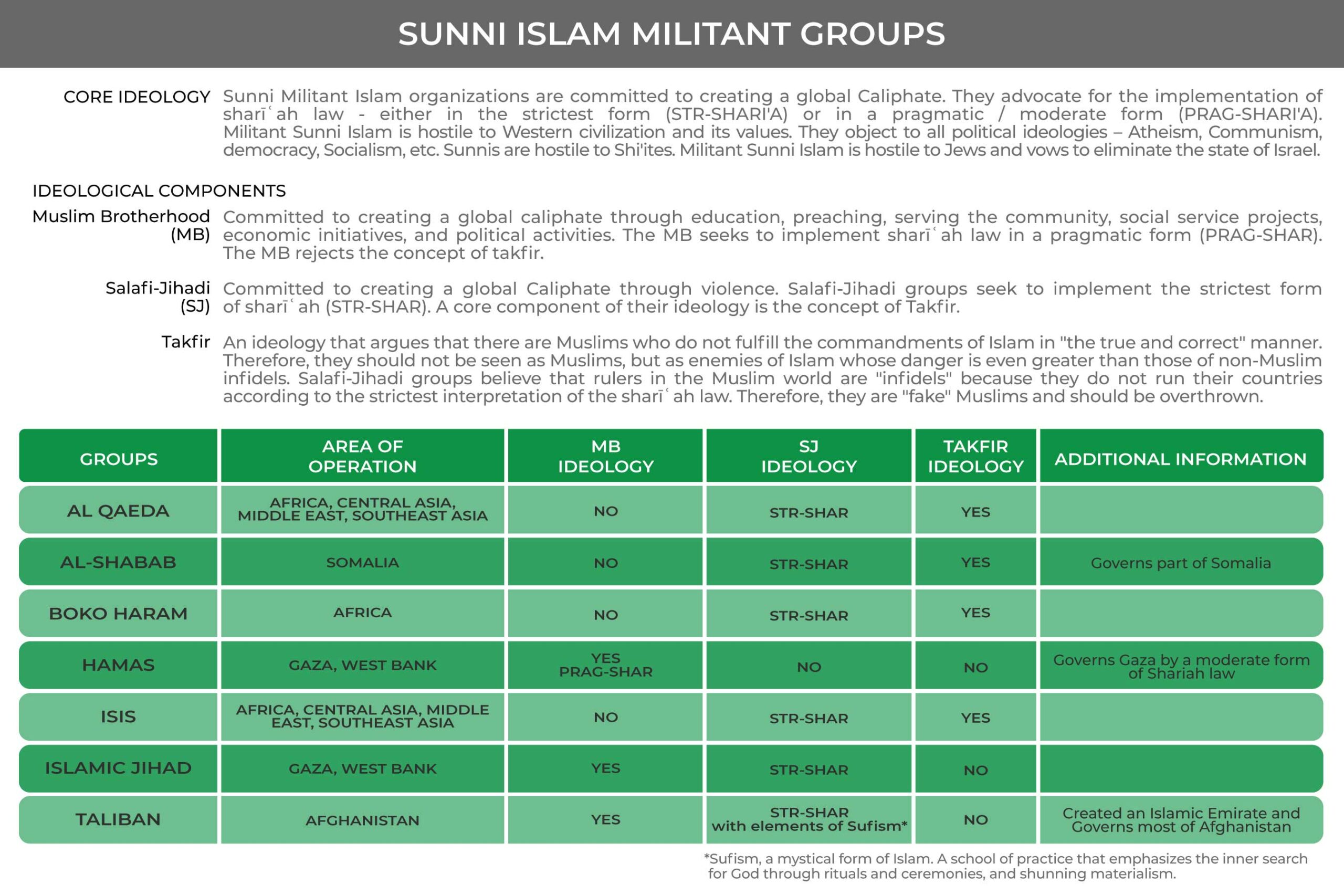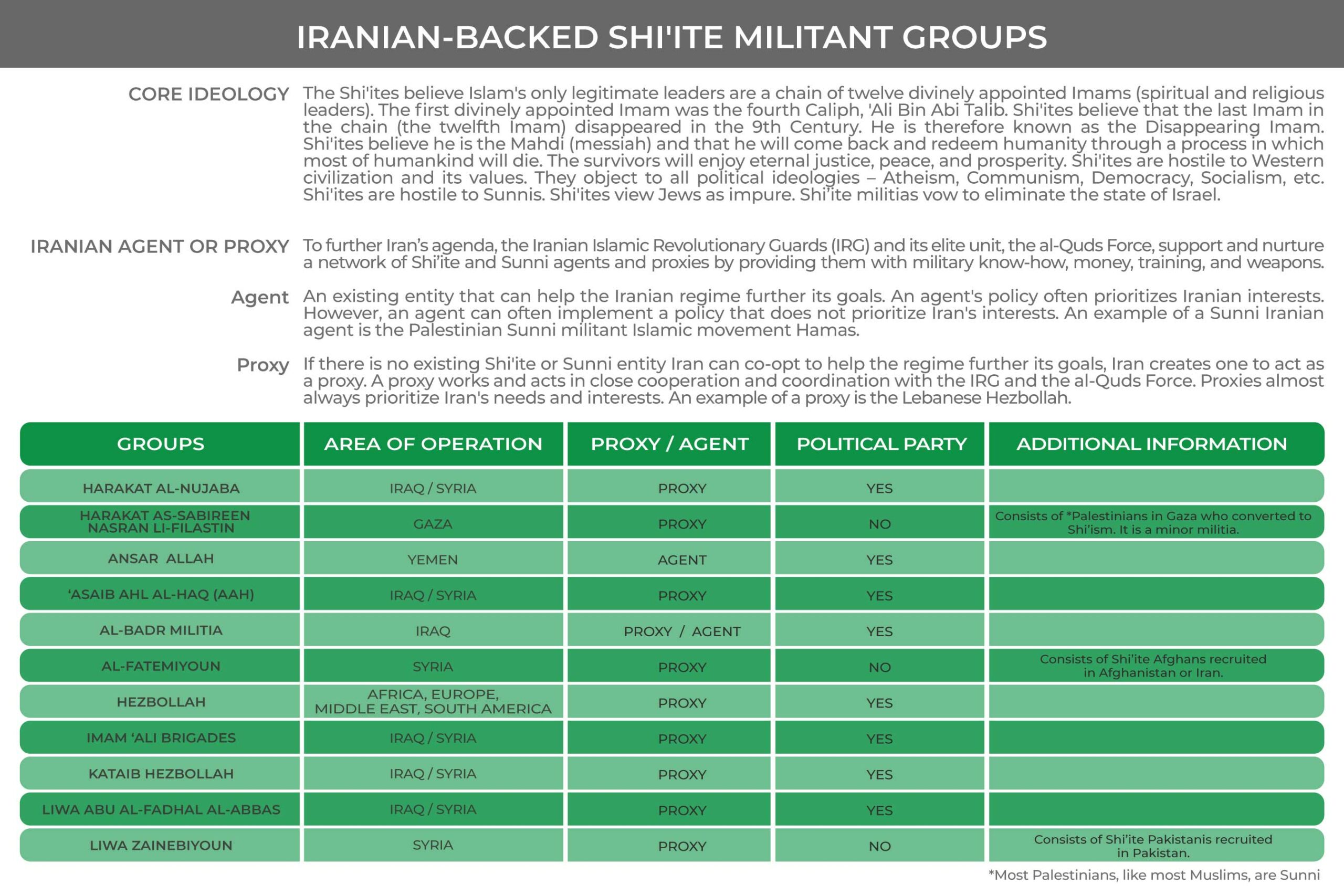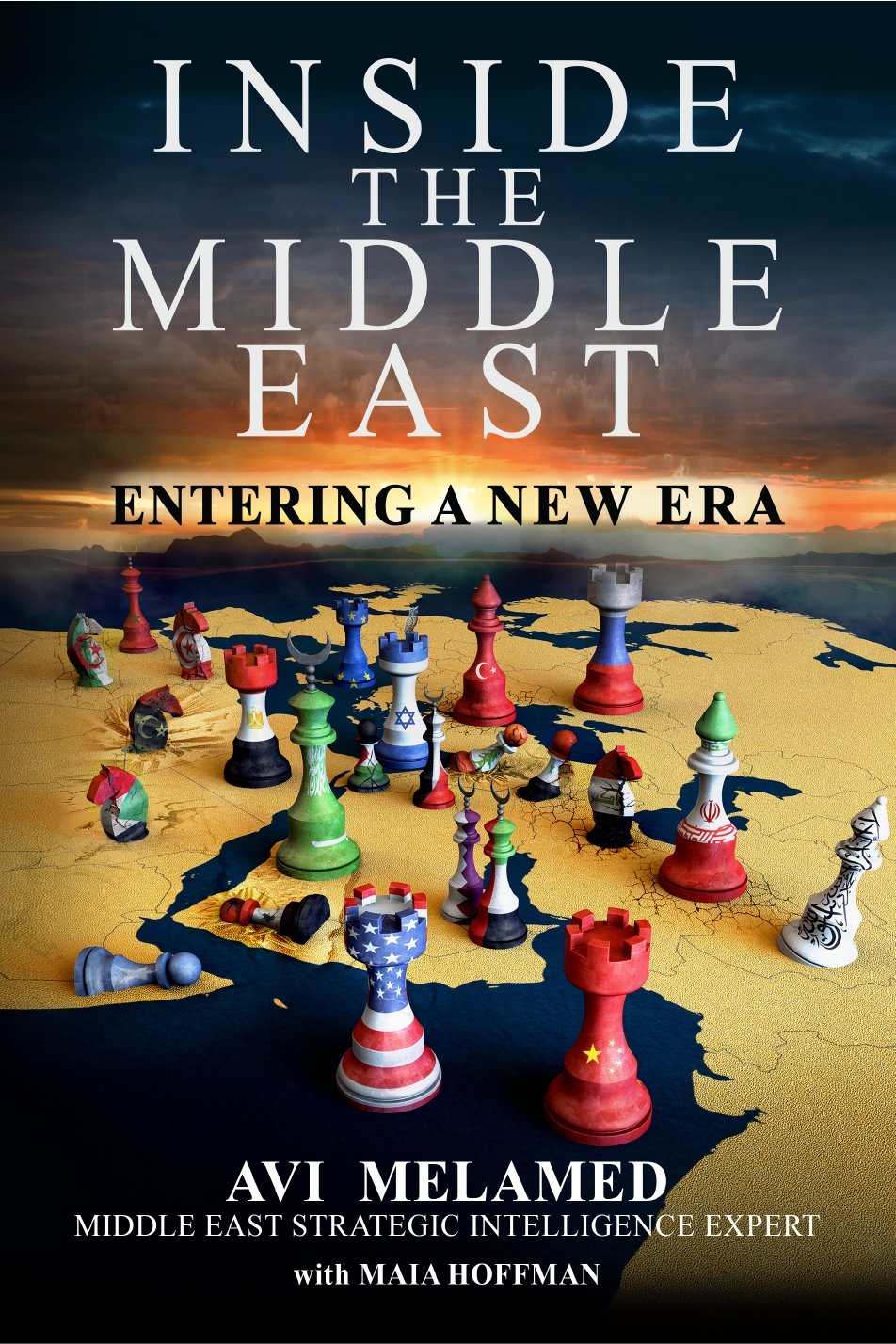|
Getting your Trinity Audio player ready...
|
Session Two | STATEHOOD & NATIONALISM IN THE MIDDLE EAST IN THE 20TH CENTURY
Session Agenda
Where We Left Off…. The End Of The Turkish Ottoman Empire
Statehood & Nationalism In The Middle East In The 20th Century
- Caliphate Pan Islamism
- Qaum Pan Arabism
- Wataniya Particularistic Nationalism
20th-Century Milestones | Struggle Over Path, Identity & Direction In The Arab World
- 1920s The Hashemite Dynasty Vision Of “Great Syria”
- 1920s -30s The French Mandate Over Syria And Lebanon
- 1920s Pan Islamism – The Muslim Brotherhood
- 1930s – 40s Particularistic Nationalism (Wataniya) & Pan-Arabism (Qaum)
- 1950s –60s Qaum’s Pinnacle, Wataniya’s Momentum, Muslim Brotherhood On The Run
- 1970’s – … Qaum Declines, Wataniya Struggles, Islamists & Militant Islam Gain Momentum
Failure & Eruption | “The Arab Spring”
- The Scream Of Anger | The “Arab Spring” 2010 –
- Summary | The Reasons For The Failure Of The Statehood Model In The Arab World
Introduction to the Next Class + Q & A
Overview
In this session, we’ll explore the transition from the Ottoman Empire to the complex statehood and nationalism dynamics in the Middle East through the 20th century. We’ll start with the Sykes-Picot Agreement and the San Remo Conference, setting the stage for future geopolitical shifts. We’ll delve into the rise of ideologies like Pan-Islam, Pan-Arabism, and Particularistic Nationalism, and how these shaped regional identities and political trajectories. We’ll examine key historical milestones, including the formation of modern states under colonial mandates, the impact of the Hashemite dynasty, and the creation of the Muslim Brotherhood. This narrative will culminate in the socio-political changes leading to and resulting from the Arab Spring, reflecting on the reasons behind the persistent challenges in establishing effective statehood in the region.
Background Reading For Session 2
STATEHOOD & NATIONALISM IN THE MIDDLE EAST IN THE 20TH CENTURY
- Pan Islam
- Pan Arab
- Particularistic Nationalism
- Monarchies
- The Struggle Over Path, Identity & Direction In The Arab World
- Failure & Eruption | “The Arab Spring”
SUMMARY | WHERE WE LEFT OFF…
THE END OF THE TURKISH OTTOMAN EMPIRE
By the 1910s the European powers – Great Britain, France, Russia, and Spain had established de-facto rule over the areas of the declining Ottoman Empire.
In May 2016, a secret agreement known as the Sykes–Picot Agreement between Great Britain and France divides the rule of the two powers over the area of Mesopotamia and the Arabian Peninsula. A line drawn on the map stretching from the city of Acre / Acco / Akko on the Mediterranean Sea eastwards to the city of Kirkuk in northern Iraq shows how the area was divided. North of that line was to be ruled by France. South of that line was to be ruled by Great Britain. Palestine was to be “internationally ruled”.
The San Remo Conference (April 1920) reaffirmed – and expanded – the Sykes–Picot Agreement.
The San Remo Conference provided Great Britain and France a mandate to the areas agreed upon in the Sykes-Picot agreement. And it gave Great Britain the mandate to rule the area of Palestine. The conference also expanded the mandate system to other areas previously ruled by the Ottoman Empire in North Africa.
On November 1, 1922, the Turkish Ottoman Empire came to an end.
The Republic of Turkey was formally declared on October 29, 1923. And with this, a new chapter in the story of the Middle East begins….
PAN ISLAM | PAN ARABISM | PARTICULARISTIC NATIONALISM
STATEHOOD & NATIONALISM IN THE MIDDLE EAST IN THE 20TH CENTURY | CALIPHATE, QAUM & WATANIYA
With the end of the Ottoman Empire, the people of the region, most of whom were Muslim Arabs, began to take their first steps toward self-determination. And, with that, they started to grapple with the following question: “What will be the future political structure of the region?”
Three competing ideologies regarding the struggle over the path, identity, and direction of the people in the region capture the intellectual, political, and cultural discussion: Caliphate, Qaum, and Wataniya.
Caliphate. All Muslims should live in one global Islamic entity (the Caliphate) ruled by sharīʿah law. This is a concept known as Islamist or pan-Islam, in which all Muslims live in one Islamic entity, under Muslim law.
Qaum. All Arabs should live in one united political Arab entity. This is a concept known as Pan-Arabism, in which all Arabs as one nation with no physical borders.
Wataniya. The people of the region should live in independent states. This is a concept called Particularistic Nationalism, in which there are independent states based on various common denominators, including ethnicity, geographical location, religion, etc.
20TH-CENTURY MILESTONES | MONARCHIES | THE STRUGGLE OVER PATH, IDENTITY & DIRECTION IN THE ARAB WORLD
1920S | THE HASHEMITE DYNASTY VISION OF “GREATER SYRIA”
The Hashemite family is one of the “royal”families of the Arabian Peninsula. They trace themselves directly back to Hashem, the grandfather of Prophet Muhammad, who founded Islam in the 7th century.
During World War I, as the Ottoman Empire declined and it was clear the British and the French were going to replace the Ottomans and become the ruling powers in the region, the leader of the Hashemite family at the time, Sharif Hussein (Sharif is a word that means he comes from a noble Islamic heritage) aligned himself with Great Britain against Turkey. In return for his support, he was promised that after the war (when the Ottoman Empire would come to an end), the Hashemite family would play a central political role in the region.
According to the plan, Hussein’s third son, Faisal, will be the king of Al-Sham, a geographic area also known as “Greater Syria“, including Syria. Lebanon, Palestine/Eretz Israel and Transjordan.
The Hashemite’s goal was to create its kingdom in that area. The Hashemite vision of “Greater Syria” was in a way sort of a smaller model of Qaum – a Pan-Arab entity.
Sharif Hussein’s 3rd son, Faisal, indeed with Great Britain’s support did become the king of “Greater Syria.” But his rule was very short (March – July 1920). This was because the Hashemite vision of “Greater Syria” conflicted with France’s vision when it came to Syria and Lebanon. France used its military power to end Faisal’s reign and he was overthrown. With Faisal being overthrown, the Hashemite vision of “Greater Syria” failed – and the Hashemite rule over Syria short.
The British compensated the Hashemites by crowning Faisal as king of Iraq in 1923 and his brother Abdullah as the king of Trans Jordan (1921) – later known as the Hashemite Kingdom of Jordan.
The Hashemites did not achieve their vision of creating or ruling a ‘Greater Syria’ kingdom.
The Iraqi branch of the dynasty ended in a brutal coup in 1958 with the killing of king Faisal II.
The Hashemite rule over the West Bank, which was occupied by Jordan in the 1948 War, ended in 1967.
Jordan remains under the rule of the Hashemite Dynasty until today.
1920S – 1930S | SIX SEMI-AUTONOMOUS ENTITIES UNDER THE FRENCH MANDATE
In April 1920 the San Remo Conference officially granted France the mandate to rule Lebanon and Syria.
During 1920 and 1921, France divided the areas of Syria and Lebanon into six semi-autonomous states under its rule.
Le Grand Luban (The Great Lebanon), État de Damas (State of Damascus), État d’Alep (State of Aleppo), État des Alaouites (State of the Alawites), État de la Montagne Druze (The State of the Druze Mountain), and Sandjak d’Alexandrette (the Sandjak of Alexandretta).
1920S | THE MUSLIM BROTHERHOOD
Many Muslims – Arabs and non-Arabs, strictly saw the West as a danger and believed it to be a threat to the societal structure of Islam and its conservative values, and an existential threat to Islam itself.
Guided by that outlook and sense of urgency, Egyptian teacher Hassan al-Bannāʾ (1906–1949) at the end of the 1920s, founded the Muslim Brotherhood. Which will become the biggest mass Sunni movement in the world.
From its very early days, the seeds for the potential for conflict between political Islam (political Islam is a general name for Islamic political parties, movements, and organizations that participate in their countries’ political domestic system. At the core of Political Islam is the desire to advance an Islamist ideology centered around the vision of a global, pan-Islamist entity – the Caliphate through its political action) on the one side, and Qaum – nationalist pan-Arabism and Wataniya – particularistic nationalism and idea on the other side are sewn.
The tension comes to a head in Egypt in the late 1940s. There is a direct and violent confrontation between the Muslim Brotherhood and the Egyptian government which leads to the assassination of Hassan al-Banna, founder of the Muslim Brotherhood, who was killed by the Egyptian government in 1949.
1930S – 1940S | PARTICULARISTIC NATIONALISM (WATANIYA) AND PAN-ARABISM (QAUM)
In 1936 Egypt declared independence. In 1943 Lebanon declared independence. In 1946 Syria declared independence.
Nationalists in these countries emphasized particularistic identity features unique to their regions and heritage.
For example, Egyptian nationalists emphasized the chapter of the Pharaohs as a unique, particularistic feature of Egypt. Lebanese Christians who were then the biggest demographic group in Lebanon emphasized the Phoenicians as a particularistic feature of Lebanon.
A milestone in the field of particularistic nationalism (Wataniya), was the establishment of the Arab League (1945). At that stage, the Arab League was comprised of Egypt, Iraq, Jordan, Lebanon, Saudi Arabia, and Syria.
In terms of pan-Arabism (Qaum) in the 1930s the Ba’ath (in Arabic, renaissance or revival) ideology, which was a combination of pan-Arabism and socialism, appeared in the Arab world.
The Ba’athist ideology fascinated many in the Arab world – especially in Syria and Iraq, where the Ba’athist parties came to power in the 1960s.
1950S – 1960S | QAUM’S PINNACLE, WATANIYA GAINS MOMENTUM, THE MUSLIM BROTHERHOOD IS ON THE RUN
Qaum. Egyptian President (1954 to 1970) Gamal Abdul Naser advocated for the unification of the Arab world under Egypt’s Leadership. Naser’s Pan-Arab vision excited the Arab masses.
At its pinnacle moment, Egypt and Syria formed a joint political entity known as the United Arab Republic (1958 – 1961).
Wataniya. Further strengthened with the independence of North African Arab countries: Libya (1951), Morocco (1956), Tunisia (1956), and Algeria (1962).
Islamist or Pan-Islam. In the 1950s and 1960s, this camp continues to be on a collision track with governments in Egypt, Iraq, and Syria. The Muslim Brotherhood is on the run in those countries. The combination of oppression of the Muslim Brotherhood, together with mounting challenges in the Arab world, paves way for the emergence of militant Islam.
1970’S ONWARDS | QAUM DECLINES, WATANIYA STRUGGLES, ISLAMIC GROUPS & MILITANT ISLAM GAINS MOMENTUM
The challenges of the Arab world increased and deepened.
Brutal dictators and military regimes, poverty, lack of services, unemployment, violence, violation of rights, deep corruption, and many other illnesses sink the Arab world in despair, resulting in growing anger.
This reality was fertile ground for the Islamic and particularly the militant Islamic camp to gain momentum and challenge the rulers and governments.
The Islamic camp – both the Muslim Brotherhood, as well as militant Islamic groups – openly collidedwith the governments and rulers.
That collision further deepens the chaos and despair within the Arab world.
The anger and frustration that erupted from time to time across the Arab world were brutally oppressed.
Yet, a massive volcano of rage was piled up beneath the surface. Until it erupted.
THE ARAB SPRING
THE SCREAM OF ANGER | THE “ARAB SPRING” 2010 –
In December 2010, in horrifying act of despair and frustration, a Tunisian peddler named Mohamed Bouazizi set himself on fire.
The unprecedented events that followed—a revolutionary shift in the cultural, economic, political, and social tectonic plates of the Arab world—engulfed the region at the end of the first and the beginning of the second decade of the twenty-first century.
Some people call this the “Arab Spring.” Others use a term less commendable sounding; they call it the “Arab Winter.”
Others call it the “Arab Awakening.”
Overnight, Arab rulers that had been part of the landscape for decades were ousted.
Muammar Ghaddafi, in power in Libya since 1969
Alī ʿAbd Allāh Sālih, in power in Yemen from 1978
Hosinī Mubārak, in power in Egypt from 1981
Zine al-Abidine Ben Ali, in power in Tunisia from 1987
THE ARAB SPRING AND THE ARAB MONARCHIES
The countries in the Arab world that have monarchies are Bahrain, Jordan, Kuwait, Morocco, Oman, Qatar, Saudi Arabia, and the United Arab Emirates.
Jordan, Morocco, and Saudi Arabia have a king. The rest are ruled by emirs or, in the case of Oman, a sultan.
The only Arab monarchies that have experienced activities inspired by the Arab Awakening—such as mass demonstrations, ongoing political violence, social unrest, political instability, or fierce public debates in their media or political or academic circles—have been Bahrain, Jordan, Kuwait, and Morocco; the unrest, however, was not sufficient in caliber to jeopardize the stability of their regimes.
So why are the monarchic regimes in the Arab world surviving at a time when some Arab countries are experiencing enormous upheavals and others are in the process of disintegration? It appears that three central factors are granting them—at least at this stage— “a certificate of immunity”—albeit one that’s not unlimited.
One factor is that in the majority of the monarchical Arab Gulf states, and to a lesser extent in Jordan and Morocco, societies are made up of tribes. The tribes are represented in the government in such a way that they all share power, thus ensuring that the needs of their respective communities are met. Political and social leaders have an interest in preserving the stability of their country’s socio-political-economic system—and the monarchies that guarantee them—to make sure their voices are heard.
A second factor is the enormous wealth of the Arab Gulf monarchies, which enables them to provide their citizens with a high quality of life in areas like education and healthcare, as well as a guaranteed income.
A third factor in what seems like a “certificate of immunity” for the monarchies is the people’s emotional solidarity with them that is based on three central components.
The first component is the perceived legitimacy of the royal dynasties on a religious basis. The monarchies in the Gulf, with Saudi Arabia’s House of Saud monarchy as their leader, are located on the Arabian Peninsula, where the religion of Islam and Arab culture were born. The title of the Saudi king is H˘ ādim al-H. aramayn aš-Šarīfayn, “Servant of the Two Noble Holy Sites,” a reference to his leadership over the Saudi cities of Mecca and Medina, two of Islam’s three holy sites. (The third holy site is Jerusalem, or as it is called in Arabic, al-Quds, “the holy.” And One of the titles of the Jordanian king is Abid al-Quds, “Servant and Defender of al-Quds.” This title was bestowed upon the king of Jordan because, between 1948 and 1967, Jordan ruled the east part of Jerusalem including the old city of Jerusalem and the al-Haram al-Sharif compound known also as the Temple Mount compound or in Hebrew, Har Ha Bayit.)
The second component is the legitimacy of the royal dynasties based on familial lineage to Prophet Muhammad. The Hashemite Dynasty of Jordan traces itself back to the grandfather of Muhammad the Prophet. The royal dynasty in Morocco traces itself to the daughter of Muhammad.
The third component is the people’s affection for and admiration of their monarch. The importance of emotional connections in the Arab world should not be underestimated. Arab culture and society are tribal, and values of devotion, loyalty and obedience to the leaders are deeply rooted. Ceremonies like the bay’ah, an oath of allegiance, are reflective of this devotion and are important traditions.
SUMMARY | THE REASONS FOR THE FAILURE OF THE STATEHOOD MODEL IN THE ARAB WORLD
At the end of the nineteenth and the beginning of the twentieth century, the construct of the nation-state appeared in the Middle East. Disparate peoples, religions, and cultures were introduced to the concept of nationalism.
The problem was that the different groups did not develop a sense of “togetherness” or the idea of a “common destiny” or “mutual responsibility.” Those are essential building blocks for the establishment of a particularistic national state.
The traditional components of their identity—their religion, ethnicity, geographic region, and tribe—remained the dominant part of their identity. The notion of “statehood,” although it existed, was a secondary component.
The people’s connection to each other under a “flag” was to a large extent, artificial.
Traditional, historic components of people’s identity – such as customs, dialect, ethnicity, family, geographical origin, norms, religion, and tribe were more powerful and more central to people’s individual identity and the community’s collective identity than the vague concept of national statehood.
With the introduction of national statehood in the Middle East in the 1900s, Arab societies were thrust into a powerful whirlpool as they struggle – and continue to struggle – to define their identity, path, and direction.
Given this reality, the independent Arab states established during the twentieth century suffered built-in instability and weakness.
And many of these states were run by dictators who used the state to consolidate their own wealth and power—paying little or no attention to their constituents and their needs. Their tactic to keep the masses quiet was to espouse slogans such as “Arab Unity” or “Arab Solidarity.” Leaders would tell people that their problems were coming from “the other”—the Colonialists, the West, the Zionists, etc.
In its essence, the Arab Spring was, in its essence, an indictment of the failed nation-state. People rose up across the Middle East and Africa because their governments and rulers had failed to provide them with life’s most basic needs.
The Arab Spring was a demand that government must provide its constituents with real answers to real problems. The Arab Spring was a demand for clean water, education, food, healthcare, housing, jobs, sanitation, etc. It was a cry for a life of hope and dignity.
Some claim that the Arab Spring is the reason for the current chaotic reality in some Arab countries.
It is the other way around: The Arab Spring is the outcome of chaotic reality stemming from the failure of statehood model in the Arab states.
THE CRISIS OF THE ARAB WORLD | WESTERN PERSPECTIVES
In Western academic and intellectual circles, it is widely argued that the arbitrary borders drawn by the West to further the Western colonialism and imperialism have doomed the people of the Middle East to a reality of violence, destruction, and systemic inequality.
The excessive weight attributed to Western colonialism and imperialism has impaired the West’s reading of Middle Eastern reality. There are two reasons for that observation.
One reason is that inequality and violence stemming from rivalries between various regional groups, whether based on ethnic, economic, familial, geographical, religious, tribal, or other factors, existed in the area long before the current boundaries were drawn. Ultimately, human beings, not physical boundaries drawn on a map, shape their own reality.
The second reason is the fact is that Arab states have been independent states for at least fifty years or more.
Arab states have armed forces, constitutions, governments, police, security forces, etc.
Failing Arab countries like Iraq, Libya, and Yemen have been blessed with vast natural resources such as oil and gas that could have been a source of growth and prosperity.
Arab leaders and rulers, to retain their own power, have encouraged the people they rule to look elsewhere for their problems to divert criticism and quiet the street.
First and foremost, Arab governments must be held accountable for their actions.
Lexicon for Session 2
Abdullah Bin Hussein Bin ‘Ali al-Hashimi (1882 – 1951)
King of Transjordan (1921 – 1951), the second son of Sharif Hussein Bin Ali al-Hashimi. Assassinated in 1951.
Alawites
A minority in Syria. A distant branch of the Shi’ites. However, they have different norms and customs in comparison to mainstream Iranian Shi’ites.Syria’s president Bashar al-Assad is an Alawite.
Ali Abdullah Saleh (1942–2017)
A Yemenite Shi’ite politician, President of Yemen (1990–2012). President of Yemen Arab Republic (1978–1990). Following mass protests in the Yemeni Revolution in 2011 and 2012 protesting corruption, a broken economy, and unemployment, and calling for Saleh to step down, he resigned and agreed not to pass the rule to his son. He allied with the Houthis following their 2014 coup. However, tensions between Saleh and Houthi increased, and the Houthis killed him in 2017.
Arab Spring/Arab Awakening
A wave of protests in the Arab world that began in Tunisia in 2010 and spread quickly to many Arab countries—including Algeria, Egypt, Jordan, Libya, Morocco, and Syria. At the core of the protest were demands for real answers to the profound economic and social challenges and demands for political reforms, enhancement of individual and political rights, etc.
Al-Sham (“Greater Syria”)
The term Al-Sham in Arabic means ‘north’ or ‘left’ it refers to a geographical area also known until WWI as Greater or geographical Syria, which extends from the Taurus Mountains in the north to the Sinai Peninsula in the south, and between the Mediterranean in the west and the desert in the east.
Ba’ath ideology (“Revival” or “Renaissance”)
Ba’athism, a model that appeared in the Arab world in the 1950s and 1960s, advocated pan-Arabism with a socialist tone. It is a combination of “Watan” and an “Arab-style Socialism” with a sense of solidarity at its core. The Ba’athist ideology fascinated many in the Arab world, especially in Syria and Iraq, where the Ba’athist parties came to power in the 1960s. Iraq was Ba’ath from 1958 until the downfall of Saddam Hussein in 2003; South Yemen, which was called The People’s Republic of Yemen which was also Communist, was a Ba’athist government from 1968 -1990; To date, the Ba’ath party is officially the ruling party in Syria.
Caliphate
The economic, social, administrative, and political governing framework of the Muslim Empire. In the Islamic view, there is no separation between the Islamic religion and the governing / political entity. The Caliphate is a global Islamic cultural, political, and religious entity run by shari’ah law in which no other independent or sovereign state exists.
Faisal bin Hussein Bin ‘Ali al-Hashimi (1885 – 1933)
The third son of Sharif Hussein bin ‘Ali, the head of the Hashemite dynasty that ruled parts of the Arab peninsula for centuries. Following World War I, Great Britain appointed King Faisal to be the King of “Greater Syria.” Yet, his reign lasted only a few months (March – July 1920) because he was ousted by France. As compensation, he was appointed as the King of Iraq (1921 – 1933). In 1958 the Hashemite dynasty on Iraq terminated in a violent coup in 1958.
Hashemite Dynasty
One of the “royal” families of the Arabian Peninsula. They trace themselves directly back to Hashem, the grandfather of Prophet Muhammad who founded Islam in the 7th century.
Hassan al-Bana (1906–1949)
An Egyptian educator. He founded the Muslim Brotherhood movement in the late 1920s. Al-Bana was murdered—apparently under the Egyptian Government’s orders after the assassination of Egyptian Prime Minister Mahmoud Fahmi Nukrashi by a terrorist assassin (December 1948).
Hosni Mubarak (1928–2020)
The fourth president of Egypt from (1981–2011). He resigned following the Arab Spring mass protests in February 2011.
Islamist
A Muslim that is committed to proactively spreading and implementing Islam through political, cultural, or militant action. It can be different versions of Islam, according to their orthodoxy and ideology
Jamal (Gamal) Abdel Nasser (1918–1970)
Egyptian President from 1954 to 1970. He advocated for “Pan Arabism”—a political entity uniting all Arab countries under Egypt’s Leadership.
Militant Islam
An ideology committed to creating a global Caliphate through force and violence. The Caliphate they seek should be ruled by the strictest translation and application of the Islamic religious codex – the shari’ah law
Muammar al-Ghaddafi (1942–2011)
Libyan dictator (1961–2011). Ousted following mass demonstrations and executed.
The Muslim Brotherhood (MB)
Founded in 1929 in Egypt by Hassan al Bana. The MB adheres to the Political Islam school of thought and is the largest mass movement in the Sunni world. The MB is organized in a hierarchical structure. The Supreme Leader is called “the General Guide.” An advisory board that assists him is called the Shurah. MB’s slogan is “Islam is the Solution” Al-Islam hu al-hal in Arabic. The MB’s goal is to establish a global Islamic framework—a Caliphate—that will be ruled according to the Islamic shari’ah law. The MB rejects the concept of “Nation States.” They argue that a nation-state’s vision is rooted in Western culture and values that contradict Islam and Islamic law (the shari’ah) and therefore defy Allah’s rule. The MB has chapters in every Muslim state in the world. The branches’ structure is like the worldwide structure and is designed to promote the movement’s ideology and values. However, each chapter has a certain degree of independence in its political position and political activities. Given that, one can indicate different—sometimes even opposing—positions of the branches regarding political issues. Against the backdrop of the Arab Spring events, the movement reached its climax. The MB won elections and thus ruled Egypt and Tunisia. And it gained power in other Arab states. However, the short-lived success—most significantly, the MB governments in Egypt and Tunisia failed and were replaced. The failure resulted in a political and ideological crisis within the MB, leading to inner splits in some of its chapters. As a result of this crisis, the pragmatic (pragmatic does not mean moderate) wing of the movement gained strength in places like Algeria, Egypt, Jordan, Tunisia, and Morocco at the expense of the more dogmatic wing.
Particularistic Nationalism
The desire for national autonomy and sovereignty based on national characteristics and a distinct particular culture that evolved into the demand for political sovereignty. In Particularistic Nationalism, patriotism is linked to maintaining cultural integrity. It is patriotism based on cultural needs, which aims to secure and maintain a people’s right to its own territory.
Political Islam
A general name for Islamic political parties, movements, and organizations that participate in their countries’ political domestic system. Political Islam wishes to advance an Islamist ideology centered around the vision of a global, pan-Islamist entity—the Caliphate through its political action. In the Caliphate, no other independent or sovereign state exists. The Caliphate should be governed & ruled by the sharīʿah.
Qaum/Pan-Arabism
Pan-Arabism is committed to the creation of an entity with no physical borders that brings together all Arabs as one nation—a “Qaum.” The Qaum model rejects the concept of a “particularistic” national statehood (Watan and Wataniya). Instead, it promotes a framework that there should be one united political entity for all Arabs as one nation.
Rudi Khalil
A Syrian-born artist based in Germany. Designer of the ‘Scream of Anger’ poster expressing the major sentiment of the Arab Spring
San Remo Conference (April 1920)
The San Remo Conference was an international meeting held in Italy following World War I. Its purpose was to divide the territories of the Turkish Ottoman Empire after World War I among the victorious powers and to determine the precise boundaries for three then-undefined Ottoman territories in the Middle East: Mesopotamia, Palestine, and Syria, that were captured by the Allies. The boundaries of the three territories were to be determined later by the “Principal Allied Powers”. The conference reaffirmed – and expanded – the 1916 Sykes–Picot agreement. The conference provided Great Britain and France a mandate to the areas agreed upon in the Sykes-Picot agreement and gave Great Britain the mandate to rule the area of Palestine. The conference also expanded the mandate system to other areas previously ruled by the Ottoman empire in North Africa.
Sayyid Qutb (1906–1966)
An Egyptian intellectual, educator, and senior member of the Muslim Brotherhood. In the second half of the twentieth century, Qutb laid the foundation for the contemporary militant Islam ideology. Between 1948–1951 Qutb studied in the US. He earned his MA in Educational Methodology at the University of Northern Colorado’s Teachers College. His encounter with Western culture caused him to be very hostile towards the West. He viewed the West as completely antithetical and a threat to Islam. This anger and resentment became one of the central tenets of his extreme ideology. In 1965 Egyptian authorities (Gamal Abdel Nasser was president) arrested and imprisoned him for his extremist positions. While in prison, he wrote his most famous book called “Landmarks on the Path.” He was executed in Egypt in 1966 on charges of conspiring to overthrow the regime.
Sharīʿah
Literally translated as “a path.” The sharīʿah is a codex of laws developed based on a combination of the ‘Urfa (the Code of Laws of Tribes), the interpretation of the Qur’an (the Holy book of Islam), the Hadith (the oral book of Islam), and the interpretation of Islamic theologians. Islamist theologists believe the sharīʿah is the master plan given to humankind by Allah (God). Therefore, it is perfect and flawless. Any other political philosophy or political system—communism, democracy, socialism, etc.—is unacceptable to political Islam because it is human-made. And therefore, it is imperfect, unjust, and doomed to fail. Moreover, adopting any of these systems defies Allah’s will. The Sunnis believe the Sharīʿah codex was completed and sealed in the eleventh century. The Shi’ites believe the Sharīʿah is dynamic and open to interpretation.
Sharif Hussein Bin ‘Ali al-Hashemi (1853 – 1931)
An Arab leader from the Banu Hashim clan in the Arab Peninsula. The Hashemites ruled parts of the Arab Peninsula for centuries until 1925. The fact that his title is ‘Sharif’ means that he comes from an Islamic noble heritage. The Hashemite family is a direct descendant of the prophet Muhammed’s grandfather – Hashem. Hussein allied with Great Britain against the Turkish Ottoman Empire. In return for his cooperation, he was promised that his dynasty will have a leading position in the post-Ottoman empire period. He was the Emir of Mecca and after the downfall of the Ottoman Empire was the King of the Hejaz and Caliph from 1924 – 1925. His Second son, Abdullah, was king of Transjordan (1921 – 1951). His third son, Faisal, was king of Syria (1923) and later king of Iraq (1923 – 1933).
Sykes-Picot Agreement
A secret treaty between Great Britain and France to define their mutually agreed spheres of influence and control in the eventual partition of the Ottoman Empire. It was a line drawn on the map stretching from the city of Acre / Acco / Akko on the Mediterranean Sea eastwards to the city of Kirkuk in north Iraq. North of that line was to be under France’s rule. South was to be under the rule of Great Britain. Palestine was described as “internationally ruled”.
Statehood Model based on Particularism
A model of statehood that centers around the concept of “Watan” (the Homeland). In the “Watan” model, there is a sense of solidarity within all Arab states, and the concept of “Arab” as an ethnicity is a central (though not the only) component of the identity of the state. However, each state is independent and sovereign. The “Watan” model also emphasizes the state’s unique characteristics (local history, traditions, societal fabric, etc.) and independence and sovereignty
United Arab Republic (1958 – 1961)
Egyptian President Naser’s Pan-Arab vision excites the Arab masses. At its pinnacle moment, Egypt and Syria are forming a joint political entity known as the United Arab Republic.
Ummah
The Islamic collective community
Watan
The Homeland
Wataniya
Particularistic Nationalism, envisions that the people of the region should live in independent states based on various common denominators, including ethnicity, geographical location, religion, etc.
Zine al-Abidine Ben Ali
Tunisia’s second President (1987 – 2011), ousted following the outbreak of the Arab Spring. Fled to Saudi Arabia and died there in 2019.




